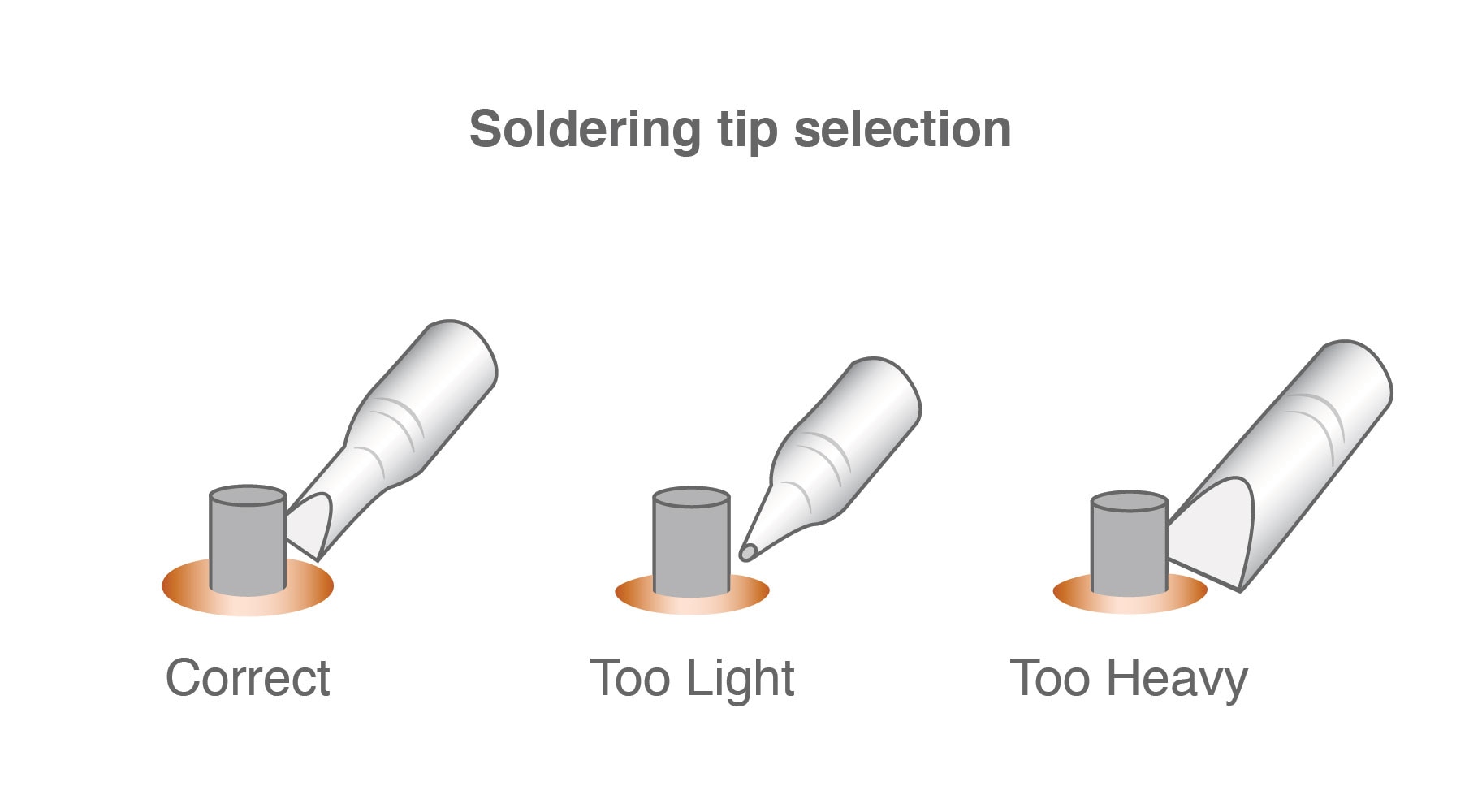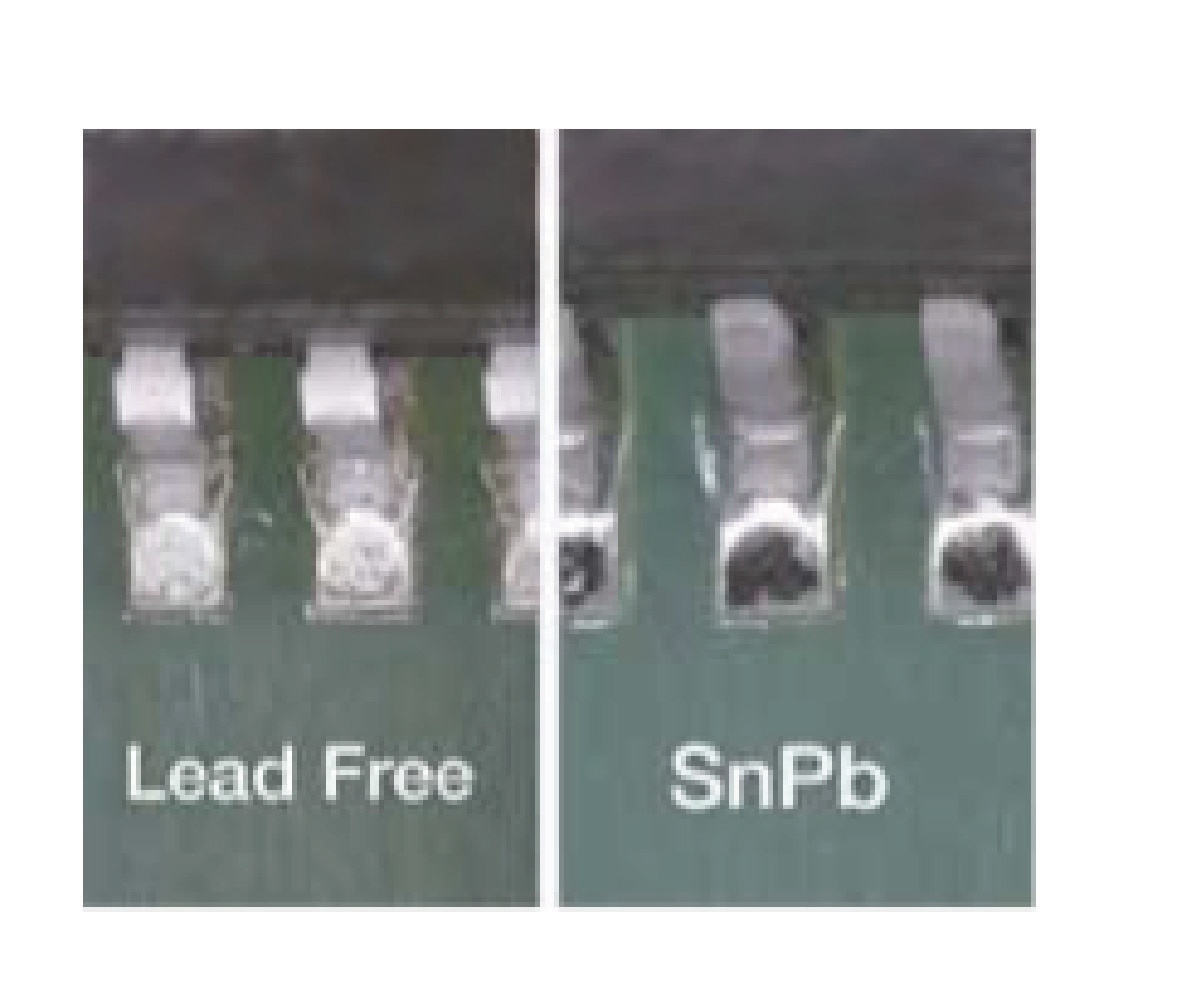ROHS vs. Non-ROHS Soldering
2015-08-26 | By Edward Fenderson
The use of lead-free solder in electronics is becoming more common as manufacturers continue to comply with the ROHS directives. There are similarities in the soldering practices for both ROHS and non-ROHS solders; however, the ROHS soldering process requires a different approach and more care.
Good practices such as having clean pads, a clean soldering iron tip, and allowing the solder connection to cool undisturbed are common for both solders.
Differences between the lead-free and lead-based solders
Soldering Temperature
The lead-free solders melt at higher temperatures of about 217°C/422°F compared to 183°C/361°F for the lead-based option. The PCB materials and electronic components must therefore be able to withstand the higher temperatures.
Due to the high soldering temperature, one must remove the soldering iron more quickly to avoid icicles, damaging the components or the tracks.
Inferior wetting properties
The wetting of ROHS solder takes longer and is worse on dirty, oxidized surfaces; in addition, this solder does not spread as much as the lead-based option. Increasing the temperature improves the wetting; however, the high temperatures shorten the soldering iron tip life, and may damage the PCB and the components.
A more aggressive flux may also be used to improve the wetting. In this case, a thorough post-solder cleaning should be done to prevent flux-related problems such as corrosion, dendritic growth, poor adhesion of the conformity coatings, and electromigration, which can cause short circuits between circuit traces.
| Tin/Lead | Tin/Silver/Copper | |
| Melting temperature | 183°C | 217°C |
| Time taken to wet clean copper at 23°C above melting point | 1.5 seconds | 4.0 seconds |
Table 1: Summary of melting points and wetting of the ROHS and non-ROHS solders
Soldering iron and tip life
The lead-free soldering processes require the use of higher wattage soldering irons. And since effective heat transfer is largely dependent on the solder tip and the dwell time, the tips for lead-free soldering should be of the correct size and tip design, and capable of transferring enough heat to the joint. In addition, the tip face size should match the size of connection being soldered.

Figure 2: Soldering tip selection
Image Source: Kester
The lead-free soldering tip wears out faster due to the high temperatures and aggressive flux. This is due to an increased rate of oxide formation on the tip and de-wetting of the tip face. Longer tip life is achieved by using lower temperatures, always tinning the tip to prevent oxidation, using solders and fluxes designed for ROHS applications, and powering off the iron when not in use.
Appearance

Figure 3: Lead-free and lead-based solder joints
Image Source: Cedos
A good lead-based solder joint will be smooth and shiny, while the lead-free joints are usually duller and grainy.
Soldering prcedure
Ensure that the PCB surface, the pads, the component leads, and the soldering tip are all clean.
- Place the iron tip on one side of the connection between the pin and pad for a few seconds, and then place the solder on the other side. The solder will melt and flow to cover the joint.
- The lead-based solder joint takes 2–5 seconds while the lead-free requires about seven seconds. It is recommended that the lead-free joint be made as quickly as possible; otherwise, longer times lead to overheating components, lifting pads, and damaging of the PCB. Use a higher wattage iron or larger tip if the connection requires more heat (e.g., for big connectors).
- Remove solder and then pull out the soldering iron quickly and then give the joint time to cool undisturbed.
- Avoid retouching the lead-free connections due to their dull appearance and rough finish. Retouching may lead to weaker joints caused by the growth of the intermetallic layer between the component lead and the copper land.
Have questions or comments? Continue the conversation on TechForum, DigiKey's online community and technical resource.










